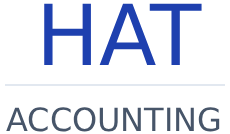For eCommerce businesses, cash flow management is critical for survival and growth. With varying sales cycles, subscription models, and inventory costs, eCommerce entrepreneurs must be diligent about tracking their incoming and outgoing cash. In this article, we will discuss strategies to manage cash flow effectively and avoid common pitfalls.
1. Use Cash Flow Forecasting
Forecasting cash flow is a proactive approach that helps you plan for future expenses and revenue. Create a monthly forecast of expected sales, upcoming costs, and the timing of payments. By projecting cash flow, you can predict potential shortfalls and take actions to bridge those gaps—whether by cutting costs or securing additional financing.
2. Monitor Payment Gateways and Transaction Fees
eCommerce businesses typically rely on payment gateways like PayPal, Stripe, or Shopify Payments. While convenient, these gateways often charge fees that can add up over time. Keep track of the fees associated with each transaction and ensure that you factor these costs into your pricing and cash flow projections.
3. Keep an Eye on Accounts Receivable
When customers buy from your online store, some may choose to pay with delayed methods like credit terms or subscription models. It’s crucial to keep an eye on outstanding accounts receivable (AR) to ensure timely payments. You can automate invoicing reminders and use accounting software to track unpaid invoices, helping you stay on top of cash flow.
4. Manage Your Inventory Efficiently
Carrying excess inventory ties up cash that could be used elsewhere in your business. On the other hand, insufficient inventory can lead to missed sales opportunities. Use inventory management tools to balance your stock levels, prevent overstocking, and reduce storage costs. This can help free up cash flow and improve profitability.
5. Reduce Operating Costs Where Possible
Reducing overhead costs can increase available cash flow. Regularly evaluate your expenses and see where you can cut back. Negotiate better deals with suppliers, switch to cost-effective shipping solutions, or find more affordable marketing strategies to maintain a positive cash flow.
Conclusion
Effective cash flow management is the lifeblood of your eCommerce business. By forecasting your cash flow, closely monitoring accounts receivable, and optimizing inventory, you can ensure that your business remains financially stable and able to capitalize on growth opportunities.





